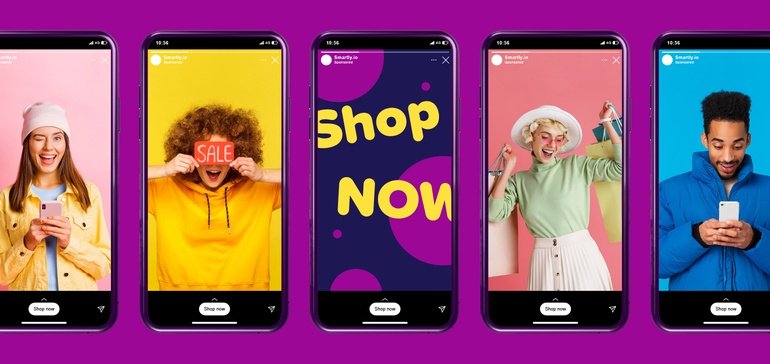SOCIAL
Stories Are the New Storefront


How do you lure in shoppers when the streets are empty and stores are losing footfall? The pandemic has presented the retail industry with an unprecedented challenge, moving business out of physical stores and into the digital realm. In many cases, that’s come at the cost of human interaction: although ecommerce is a quick and convenient way to shop online – and it is booming – it also lacks the social component that stores have offered.
No one likes a brand that’s purely transactional. That’s why now more than ever retail brands must focus on digital storytelling: on creating brand experiences and interactive digital moments that bring their products and services to life. In fact, social commerce is quickly becoming the most important way to drive real shopping intent.
Brands must meet shoppers wherever they are – including at different points on the digital shopping journey, from discovery all the way to the point of purchase. Nowhere is that easier or as effective as on social media, and on Stories in particular.
Stories have transformed social media and advertising. We are currently witnessing the entirety of the social media landscape merging into Stories. The same Stories format is in use across Instagram, Facebook, Pinterest, Snapchat, Twitter, LinkedIn, and now even Spotify. TikTok was entirely built on Stories. New versions of Stories are beginning to pop up as well, including Instagram Reels and Spotlight on Snapchat.
The shift from Feed to Stories, for advertisers and users alike, represents a leap even bigger than that of desktop to mobile. Invented by Snapchat, mainstreamed by Instagram (where Stories now have more than 500 million daily actives), and further popularized by TikTok (currently the world’s fastest growing social media platform), Stories are seen by users as a “more authentic” means of communication with friends and family. In essence, they capture “realer” moments. For advertisers, that means the format can allow for more meaningful interactions for brands to get closer to consumers.
The distinctive feature of Stories is that, rather than focusing on one single element, such as images or text, Stories allow for the full plurality of expression. Stories, as posts, can consist of long and short video, still images, graphics, text, sound, emojis, and more. As such, for brands, they can also be a way of recreating the in-store experience on a consumer’s phone: Interactive elements such as polls and Q&As can create a sense of dialogue, for example, while uplifting music paired with striking visual footage can lead to stronger emotional ties with shoppers.
The Stories format packs in at once the qualities of YouTube, Facebook, Instagram, TikTok, Snapchat, Twitter, Pinterest, and countless other social media apps. In short, Stories are a hybrid concentration of all that is social media. Advertisers who capitalize on the synergies and create content native to the format, can slide effortlessly into consumers’ pockets: Stories ads, created mobile-first, are less intrusive and more relevant. They capitalize on all the major recent developments in digital advertising: the rise of storytelling, the pivot to video, and the growing importance of personalization and localization.
With new advertising campaigns designed Stories-first – and powered by automation tools like Smartly.io – brands can take advantage of all the audiences and behaviors across all social platforms at once, deploying a consistent multi-platform interactive experience that reaches shoppers across the buyer’s journey. That might mean using Pinterest Stories to reach shoppers who are in the discovery, search phase; TikTok Stories to promote more authentic shopping experiences; Instagram Stories to create visual, creative moments; and Facebook Stories to reach those buyers who are ready to purchase.
Just because stores are shut or operating at limited hours doesn’t mean brands should give up on interacting with shoppers. With a Story-focused multi-platform strategy to social commerce, retail brands put themselves in the best position possible to connect with customers at the right moment in the right context – an unbeatable combination that will ultimately drive the sale.
